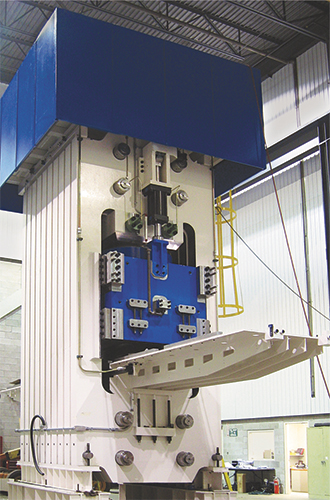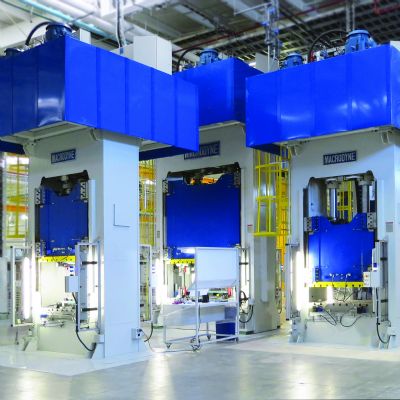Hydraulic Presses: Frame Selection
September 1, 2017Comments
There's a variety of press frames, and each offers advantages depending on the application. Here's a rundown.
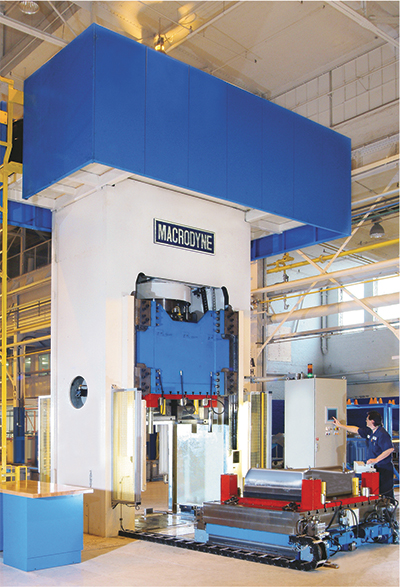
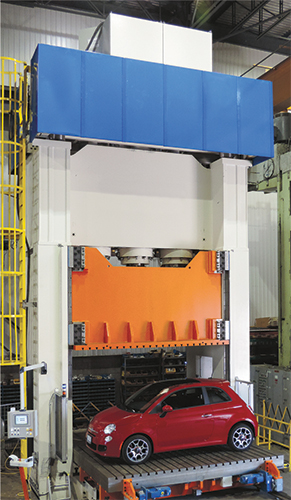
Monolithic press frame with rolling bolster Housing press frame with rolling bolster 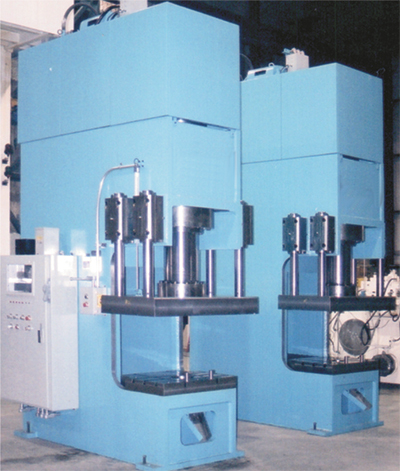
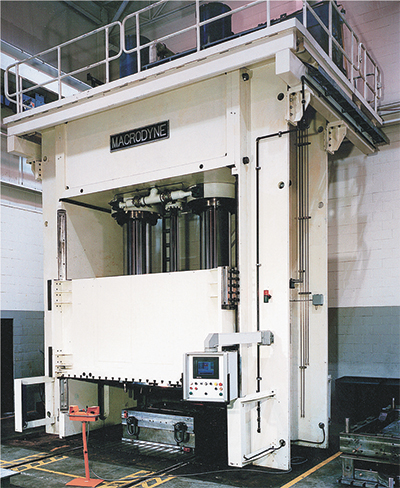
Gap-frame press Side-slab press frame 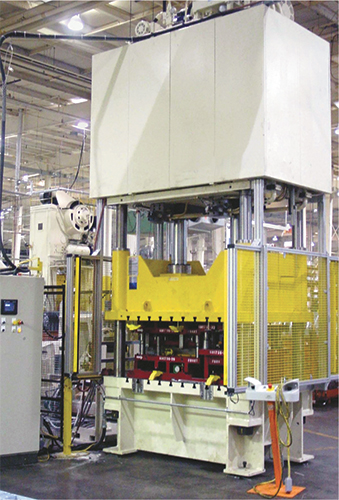
Column press frame Multi-frame press
Gap-frame pressFor some hydraulic press users, knowledge of press-frame styles and the applications they are best suited for may be limited to whatever press is on the shop floor. However, there are many available hydraulic-press-frame styles and familiarity with their characteristics will help guide metalformers in deciding which is best for their needs. With that in mind, here’s a rundown of the various frame styles.
Monolithic
- High stiffness and torsional rigidity for improved off-center-loading capability and low deflection
- Precision machining of frame due to lack of build-up tolerances associated with machining multiple frame components separately
- Adjustable eight-point gib or temperature-compensated guiding
- Low field-assembly costs because of single-piece frame
- Accessibility to all four press sides for material flow, die change and maintenance
- Suitable for single frame weights to 80 tons
- Suitable for presses in capacities to 2500 tons, depending on bed size
- Practical bed sizes as large as 120 by 96 in., depending on tonnage
- Suitable for single-acting, single-acting-with-cushion, double-acting or triple-acting metalforming applications
- Accommodates front-to-back or left-to-right rolling bolsters
Housing
- High stiffness and torsional rigidity for improved off-center-loading capability and low deflection
- Frame components (bed, slide, crosshead and housings) are pre-stressed together with tie rods and pre-stressing nuts
- Accessibility to all four press sides
- Adjustable eight-point gib or temperature-compensated guiding
- Suitable for individual frame-component weights to 150 tons (depending on the press manufacturer’s capabilities)
- Allows for larger bed sizes, in excess of 300 in. left-to-right
- Suitable for single-acting, single-acting-with-cushion, double-acting or triple-acting metalforming applications
- Can incorporate front-to-back or left-to-right rolling bolsters
- Ability to dismantle frame allows for large presses to be shipped in smaller and lighter pieces







